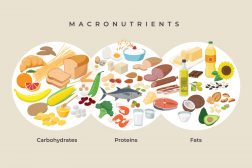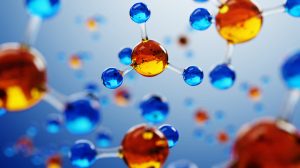Table of Contents
Definition
noun
plural: sucroses
su·crose, ˈsukɹoʊs
A disaccharide with a chemical formula of C12H22O11 that occurs in certain plants (e.g. sugarcane), and formed by the joining of glucose and fructose; common table sugar
Details
History and terminology
Sucrose has long been crystalized and used since early civilization. However, German chemist Andreas Marggraf 1709 – 1782 was named as the discoverer of sucrose in 1747. (NB: Marggraf was also credited as the first to isolate glucose from raisins in 1747).
The name “sucrose” comes from the French sucre, which is derived from the Latin saccharum (meaning “sugar”). The suffix –ose is used to indicate that it is a “sugar”. The term was coined by the English chemist William Miller. Previously, it was called saccharose as coined by the French chemist Pierre Eugène Marcellin Berthelot 1827–1907. Berthelot was also the one to have named galactose and lactose sugars just as we know them today.1
Overview
Sucrose is one of the most common disaccharide carbohydrates; other examples are lactose and maltose. Carbohydratess are a major class of biomolecules that can be classified based on the saccharide constituents. In particular,a disaccharide is a carbohydrate made up of two monosaccharides that are linked together by a glycosidic bond (glycosidic linkage).
Properties of sucrose
Lactose is a white crystalline solid. Its molar mass is 342.30 g·mol−1. Its melting point is 186 °C. It is soluble in water. Similar to lactose and maltose, sucrose has a general formula of C12H22O11. Sucrose, though, is a disaccharide made up of one glucosyl unit and one fructosyl unit. They are linked together by (1→2) glycosidic bond. This means that the bond occurs between Carbon(C)-1 on glucosyl unit and C2 on fructosyl unit.
Sucrose vs. Lactose vs. Maltose
Sucrose (“table sugar”), lactose (milk sugar), and maltose (malt sugar) are the three most common dietary disaccharides. As already specified earlier, the three disaccharides have the same chemical formula: C12H22O11. All three have a glucose constituent. In maltose, two glucose units make up the compound. In lactose and sucrose though, there is only one glucose unit that combines with another monosaccharide – a galactose and a fructose, respectively. In maltose, α-(1,4) glycosidic bond joins the two sugars, i.e. between C1 and C4. In lactose, β-(1,4) glycosidic bond occurs between C1 of galactose and C4 of glucose. In sucrose, α-(1,2)-β bond may form between C1 of glucose and C2 of fructose.
Both lactose and maltose are reducing sugars whereas sucrose is a non-reducing sugar. Maltose and lactose are reducing sugars because one of the monosaccharide constituents could present a free aldehyde group. As for sucrose, the glycosidic bond forms between the reducing ends of the two monosaccharide constituents. Thus, sucrose could not join any further with other saccharide units.
Dietary sucrose is usually from food sweetened by sugar extracted from sugar cane and sugar beet. Maltose often comes from the digestion of starchy food whereas lactose is abundant in milk and dairy products. The digestion of these sugars is aided by specific digestive enzymes, particularly sucrase, maltase and lactase. In humans, these enzymes are located on the outer surface of the epithelial cells that line the small intestine. Sucrase helps digest sucrose. Lactase aids in the digestion of lactose. Maltase helps digest maltose. These enzymes cleave the bond between the two monosaccharide components.
Common biological reactions involving sucrose
Common biological reactions involving sucrose
In sucrose, a glycosyl unit and a fructosyl unit are joined via (1→2) glycosidic linkage. Glucose may either be alpha– or beta-pyranose. Fructose may also occur in different isomers. However, only one type of each joins to form sucrose. The joining of two monosaccharides results in the release of water.
The biosynthesis of sucrose is carried out mainly by plants and cyanobacteria. They use precursors such as uridine diphosphate (UDP)-glucose and fructose 6-phosphate to produce sucrose. Plants have the enzyme sucrose-6-phosphate synthase that catalyze the transfer of hexosyl group from UDP-glucose to fructose 6-phosphate. In certain plants, sucrose serves as the primary sugar; in other plants, fructose is their main sugar. Sucrose serves as their source of energy. It is present in different plant parts, such as roots, fruits, and nectars. Nectars are used by plants to attract certain insects, such as bees, to enable pollination. Sucrose produced by plants sugarcane and sugar beet is extracted for human consumption.
Common biological reactions involving sucrose
The process whereby complex carbohydrates are broken down into simpler forms is saccharification. It is the opposite of dehydration synthesis. In dehydration synthesis, the condensation reaction causes the glycosidic bond to form between the joining sugars to form complex carbohydrates and then water is released in the process. In saccharification, hydrolysis uses water molecule and causes the glycosidic bond to break, thereby releasing the sugar constituents.
In humans, the consumption of dietary sucrose prompts the small intestine to release sucrase. The enzyme cleaves sucrose into glucose and fructose, which can then be absorbed by the enterocytes (intestinal cells), released into the bloodstream, and finally, taken up by the cells of various tissues, e.g. liver, kidney, muscle, etc. Gastric acidity also helps in the hydrolysis of sucrose as the acid in the stomach can break acetal bonds. In some animals and certain bacteria, the enzyme invertase catalyzes the digestion of sucrose.
Metabolic disorders
Metabolic disorders
Also referred to as sucrase-isomaltase deficiency or genetic sucrase-isomaltase deficiency (GSID), sucrose intolerance is a condition in humans characterized by an improper metabolism of sucrose. This is due to a lack, or insufficiency, of functional enzyme sucrase-isomaltase. This condition may be caused by a mutation in the genes that code for such enzyme. It has also been associated with aging and irritable bowel syndrome.
Metabolic disorders
Consumption of sucrose induces a rapid rise of glucose in the blood. Too much sucrose in the diet for too long could increase the risk for type-2 diabetes. Diabetes mellitus is the relative or absolute lack of insulin leading to uncontrolled carbohydrate metabolism. Type-2 diabetes is an adult-onset diabetes where the lack of insulin results in excess sugar in the bloodstream and urine.
Biological importance/functions
Sucrose is produced naturally by plants and cyanobacteria. In plants, sucrose is present in fruits, nectars, and roots. Plants synthesize sucrose from photosynthesis and store them for future use. Nectars attract insects, especially bees. The bees feed on their nectar while acting as pollinators. They also produce honey from the accumulated sucrose. Animals and bacteria feed on plants for their sucrose (apart from starch). Sucrose is extracted and refined by humans for food preparation. It is commonly known as table sugar that is used as a sweetening agent for food and beverages. Organisms feed on sucrose for its monosaccharide constituents. By digestion or hydrolysis, sucrose provides the organism glucose and fructose. Glucose, in particular, is essential since it is favored for use in energy metabolism. It is the form of monosaccharide that the cell commonly uses to synthesize ATP via substrate-level phosphorylation (glycolysis) and/or oxidative phosphorylation (involving redox reactions and chemiosmosis). Fructose acts as an alternative metabolite in providing energy especially when glucose is not sufficient while the metabolic energy demand is high. Fructose also enters other important metabolic pathways, such as glycogen synthesis, triglyceride synthesis, free fatty acid synthesis, and gluconeogenesis.
Supplementary
Etymology
- French sucre, from Latin saccharum (meaning “sugar”) + –ose (a suffix used in chemical naming of sugars)
IUPAC
Chemical formula
- C12H22O11
Synonym(s)
Further reading
Compare
See also
Reference
- Berthelot, Marcellin. (1860). Chimie organique fondée sur la synthèse. Mallet-Bachelier (publisher). p.248. Retrieved January 24, 2019, from Link
© Biology Online. Content provided and moderated by Biology Online Editors


